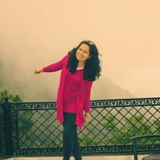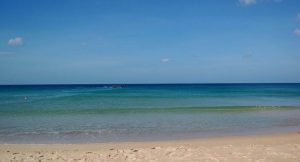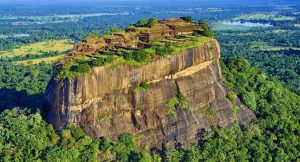Last Updated: September 9, 2019 Latika Sabharwal
A guide; a philosopher; a child god of a pastoral tribe; a pole star; a knight in shining armor and for some ‘a way of life’ – Lord Krishna is a supreme power of all. He was a wonderful Sannyasin (a Hindu religious mendicant), an amazing householder, and at the same time a powerful leader who has controlled a good amount of kings. His journey over 800 years, starting as a hero of the Vrishni tribe, and ending with him being hailed as the Vishnu incarnate has fascinated everybody. Testaments of all the events that took place during the lifetime of Lord Krishna are the temples that have been sprinkled in different corners of India. So let’s have a look at all these temples, which not only has a deep history but also are archaeological masterpieces that will tell you more about Lord Krishna’s life.
The Complete Guide to Famous Krishna Temples in India:
1. Jagannath Temple, Puri, Odisha
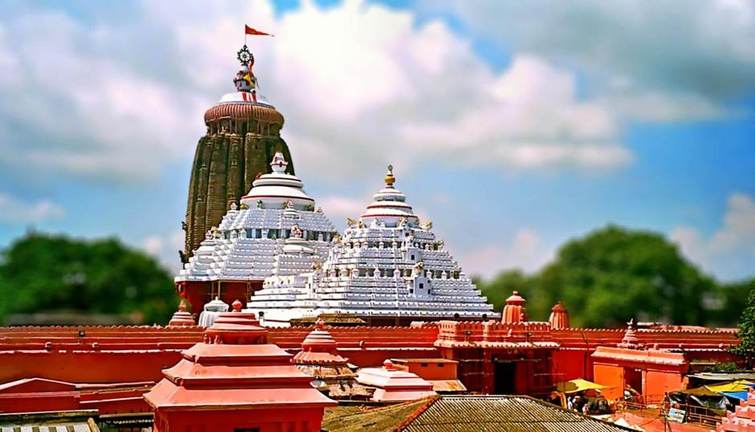
One of the dham of the renowned Chardham Yatra, Jagannath temple is a popular Lord Krishna Temple in India. The temple is sacred Hindus, and Buddhists. In the main sanctum of the temple, there is a finely wooden carved statue of Jagannath, which is quite unusual as in most temples there are stone murals. Flanking the statue on both the sides are idols of brother Balarama and sister Subhadra. What makes this temple look apart from other Shri Krishna temples of India is the fact that here procedures, practices, sacraments, and rituals are not like other Hindu temples, they are quite different. There are many unique things about the architecture of the temple too like the shadow of the temple is never visible. Despite its location close to the ocean, you will not able to hear the wave sounds in the movement you will step in the premises of the temple. Earlier, the temple was a part of the sun temple, however in 18th Century Marathas dismantled and reassembled the temple.
Festival celebrations like Chandana Yatra, Snana Yatra, Ratha Yatra, Sayana Ekadasi, and Dakshinayana Sankranti attracts a huge crowd. Amongst all these festivals, Ratha Yatra or Chariot Festival is primarily known. On the occasion of the Puri Rath Yatra, the three deities in their specific chariots are drawn by devotees and taken to the Gundicha Temple.
Temple Location: Temple Road, Puri, Odisha 752001
2. Dwarkadhish Temple, Gujarat

Needless of any introduction, Dwarkadhish aka Jagat Mandir aka Trilok Sundar is an important mythological base for the devotees of Shri Krishna. Nestled between the calm coastal and bustling Dwarka city, Dwarkadhish is the perfect place to let your hair down and revitalize our sole and spirits. The literal of Dwarka signifies ‘Gate to Liberation’- ‘Dwara’ meaning door and ‘ka’ implying eternal happiness. Like Jagannath temple, Dwarkadhish too is considered as one of the four Dham (divine abodes) in India, and even a Sapt Puris, according to Hindu religious beliefs. Dwarkadhish take pride that it was once the capital of Lord Krishna. And locals even say that the original structure of the temple was commissioned by the great grandson of Lord Krishna, Vajranabhji. The main idol of the temple is carved out of a black marble and is adorned with Kaustubh Mani, and a garland, which was gifted by Goddess Lakshmi. One hand of the idol has a Sudarshana Chakra, while the other has a conch shell.
The temple has grand Chalukya style architecture, made of soft limestone and granite. Every nook and cranny, whether its plinth, section or column, is carved with panels of elephants, dancers, celestial being and musicians. You can also visit the Rukmini Temple, which is barely some kilometers away from the main shrine.
Temple Timings: 6.30 AM to 01:00 PM & 5:00 PM to 9.30 PM
Temple Location: Dwarka, Gujarat 361335
3. Guruvayur Temple, Guruvayur, Kerala
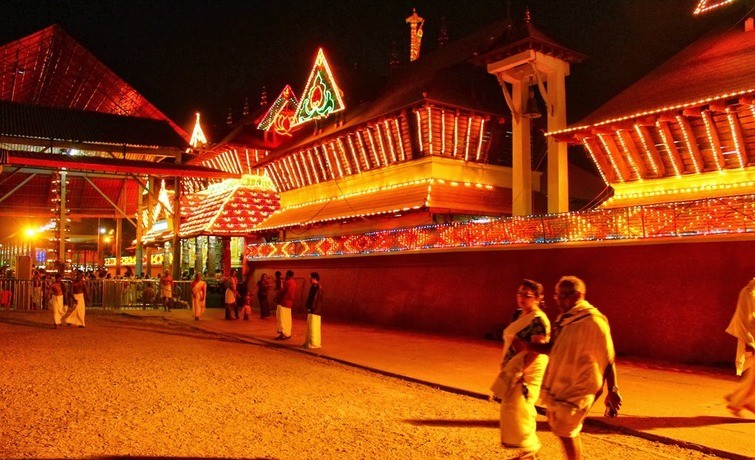
Enlisted in the list of top temples in South India, Guruvayoor Temple is often reckoned by the pilgrims as ‘Dwarka of the South.’ Inside the main sanctum of the temple, built in 1638 AD, the four-armed statue of Lord Krishna adorns the holy Tulsi (basil) garland and pearl necklace. The big tank in the temple is claimed to be the place where Lord Shiva family worshiped Vishnu.
Best time to visit the temple will be during the festivals like Ulsavam (month of Kumbha: February-March), Vishu (1st of Medam month: Mid-April), Vaishka (April-May), Ashtami Rohin ( Chingam: July-Aug), and Kuchela’s Day (first Wednesday of Dhanu: December-January). During the festival celebrations, the temple attracts a huge crowd. The most amusing part of the temple is that devotees offer elephants. A special elephant feeding program – Aanayoottu takes place at around 10:00 AM in the temple. To enter the temple, devotees should follow a dress code; men should wear dhoti, and for women, there is a saree or salwar.
Temple Timings: 03:00 AM to 01:30 PM & 04:30 PM to 09:15 PM
Temple Location: Guruvayur Devaswom, Guruvayur, Kerala 680101
4. Sri Sri Radha Madhan Mohan Mandir, Vrindavan, Uttar Pradesh
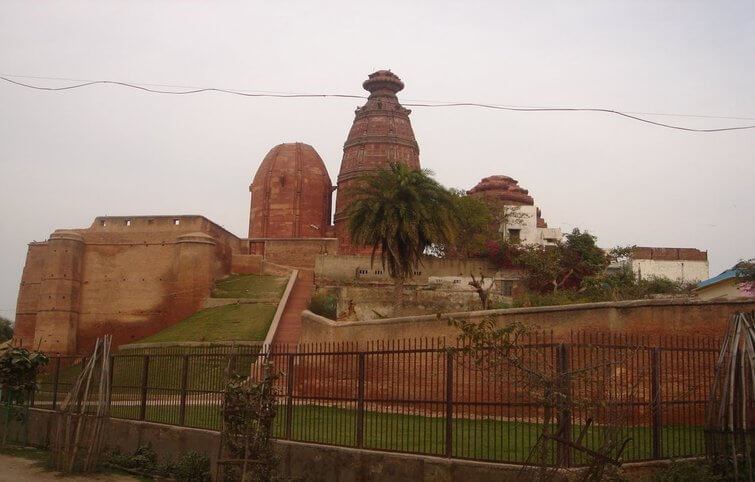
Photo: https://goo.gl/7m2sHw
Located on the top of Dvadasaditya Tila, 50 feet high hill, Sri Radha Madan Mohan Mandir was the first temple to be built in Vrindavan. Central deity of the temple is Lord Krishna, along with Radharani and Lalita Sakhi. Legend has it that the main idol of temple was discovered by Madana-Mohan at the base of an old vat tree in Vrindavana, the same place where he used to chant bhajans (devotional songs). Today, you can see that tree right below the current structure of the temple, build in 1580 by Kapur Ram Das of Multan. Madana-Mohan then decided to pass on the image of the idol to his disciple, Purusottama Chaube, who later gave it to Sanatana Gosvami. Some stories even the day that the original idol of the temple was shifted Karauli in Rajasthan to keep it safe during the Aurangzeb’s rule. Idol in Vrindavan temple is just a copy while the main one is still facilitated in Karauli, Rajasthan. Also, the temple holds a strong connection with Chaitanya Mahaprabhu, a spiritual teacher who founded Gaudiya Vaishnavism.
Temple Location: Bankebihari Colony, Vrindavan, Uttar Pradesh 281121
5. Banke Bihari Temple, Vrindavan, Uttar Pradesh
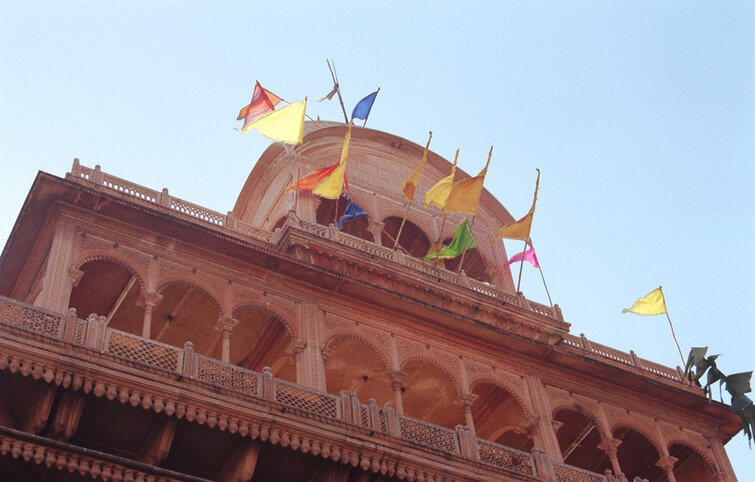
Photo: https://goo.gl/XkNr7E
Banke Bihari temple is one of the seven prominent ancient temples in Vrindavan. It was built in 1863 by Goswamis, and the idol was brought down from Nidhivan. According to the legends, the idol of preceding deity was given to Swami Haridas by the Shyama-Shyam. One day, a disciple of Swami Haridas, who also happens to be the guru of Kalidas, requested him to sing some verses. Impressed by his voice, the Celestial couple – Shyama Shyam (Radha Krishna) appeared in front of Haridas and left a black image before disappearing. Lotus feet of the idol are kept hidden; they can be only seen on Akshaya Tritiya. Another unique about the idol is that by looking continuously in the eyes of the idol, you might lose self-consciousness. And that’s the reason why the idol remains covered with curtains most of the time. Nidhi Van, Seva Kunj, Radha Damodar Mandir, Radha Raman Temple, and Shahji Temple are amongst the must visit temples. To see the temple in its full swing, you should visit here during the Shri Krishna Janmashtami festival. In Banke Bihari temple, Mangala-arati is performed only once a year and that is on Janmashtami. Devotees believe that if they attend this aarti, there will be no financial problem in the future.
Temple Timings
Summer (After Holi): 07:45 AM to 09:30 PM
Winter (After Diwali): 08:45 AM to 08:30 PM
Temple Location: Bhaktivedanta Swami Marg, Bankebihari Colony, Vrindavan, Uttar Pradesh 281121
6. Jugal Kishore, Vrindavan, Uttar Pradesh
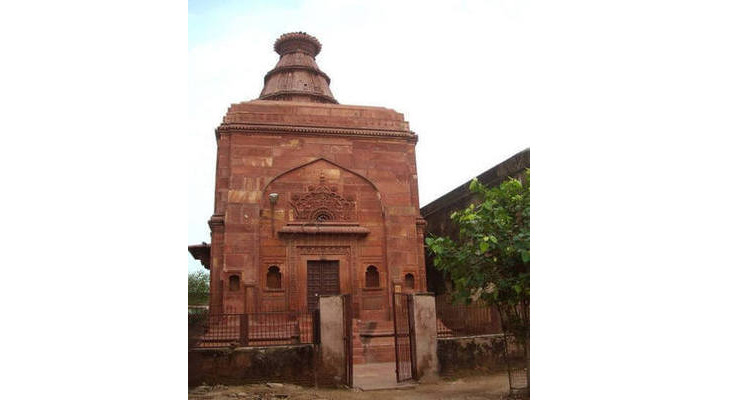
Photo: https://goo.gl/kgqrOs
Built in 1684 AD by Jahangir, a Mughal emperor. It is an important place to visit on a spiritual tour of Mathura because Krishna killed the demon Kesi and took bath on this ghat. As per the stories narrated by the legends, members of Gaudiya Vaishnava community requested King Akbar to built four new temples – Mandan Mohan Temple, Govind Dev Temple, Jugal Kishore Temple and Shri Gopinath Temple. Later, Aurangzeb attacked three of them, and original deities were moved somewhere else. The original deity is worshiped only in the Jugal Kishore temple.
Temple Location: Goda Vihar, Vrindavan, Uttar Pradesh 281121
7. Radha Raman Temple, Vrindavan, Uttar Pradesh
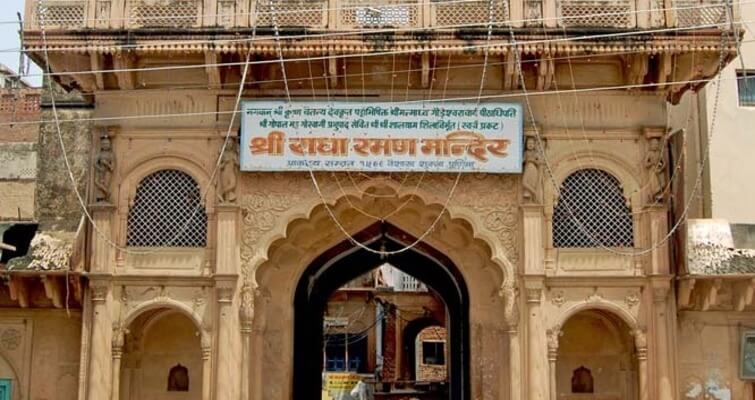
Counted amongst the 7 Thakur temples of Vrindavan, Sri Radha Raman Mandir was erected in 1542 AD on a full moon night in the month of Vaishaka. The temple was commissioned by Gopal Bhatta Goswami, one of the six Goswamis of Vrindavan who followed the principles of Sri Chaitanya Mahaprabhu strictly. The temple is known for exquisit architecture, and its self-manifested deity out of the Shaligram Shila. Most amusing part of the temple is that here you can’t find the idol of Radha Rani, though there is a golden plate next to Krishna, which has the name of Radharani engraved into it.
The current structure of the temple was built in 1826 at the cost of 80 thousand rupees by Shah Behari Lallji from Lucknow. The asana on which the lord is sitting is built entirely of wood, and even after 450 years it is still intact. Ram Navami, Chandan Yatra, Jhulan Yatra, Balram Purnima, and Radhastmi are the main festivals celebrated in the temple.
Temple Timings
Summer Timings: 04:00 AM to 08:00 PM
Winter Timings: 08:00 AM to 08:00 PM
Temple Location: Chamunda Colony, Rajpur Bangar, Vrindavan, 281121
8. Prem Mandir, Vrindavan

Photo: https://goo.gl/ouVwhW
Prem Mandir is the most amazing Hindu Temple in India, so says the pilgrims and the travelers. Located on the outskirts of Vrindavan, this divine temple was gifted by Rasik saint Jagadguru Shri Kripalu Ji Maharaj, a spiritual guru to the holy city of Varanasi. In each and every corner of the temple, you can find the mirror paintings and figures, depicting the important events of Lord Krishna life. Best time to visit the temple will be during the Janmashtami festival and Radhastami. The fountain show in the evening brings out the best in Prem Mandir, thus attracting a huge crowd.
Temple Timings: 05:15 AM to 12 Noon & 04:30 PM to 08:15 PM
Fountain Show Timings: 07:00 AM to 07:30 AM
Temple Location: Raman Reti Road, Vrindavan, Uttar Pradesh 281121
9. Udupi Sri Krishna Matha, Udupi, Karnataka
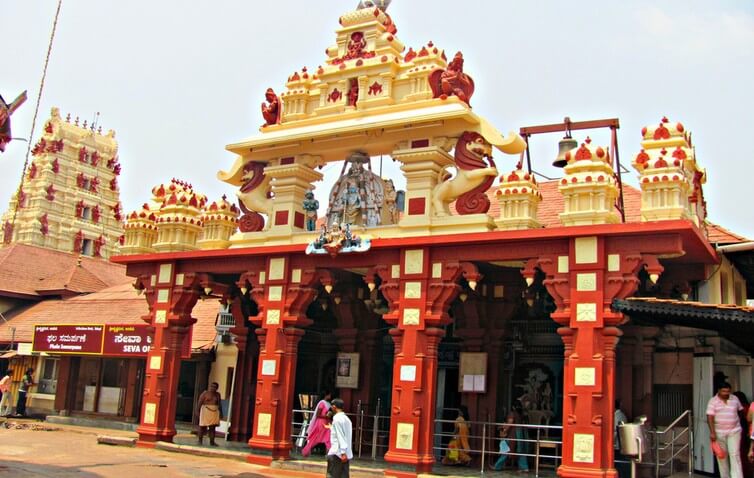
Photo: https://goo.gl/OGx5xq
Located nearby the coastal region of Western Ghats, Udupi is a popular Hindu temple sacred to Lord Krishna in South India. The temple was originally founded by Shri Madhwacharya, a Vaishnavite saint, in the 13th century, who was also the founder of Dvaita school of Vedanta. Locals even say that the Madhwacharya found the murti of Sri Krishna in a ship, which he saved miraculously from the clutches of fatal storm breeding on the sea at Malpe. Somewhere like other mutts, this one too has a west facing idol in the Pashchimabhimukha, which can be only seen by peeping into a window called Kanakanakhindi. There is another window that covers the front and is called Navagraha kind. Around the temple, there are several ancient shrines; oldest amongst them is the temple made of wood and stone and is believed to be 1500 years old.
Temple Timings: 05:30 AM to 11:00 PM & 07:00 PM to 08:50 PM
Temple Location: Car Street, Udupi, Karnataka 576101
10. Govind Dev Ji Temple, Jaipur
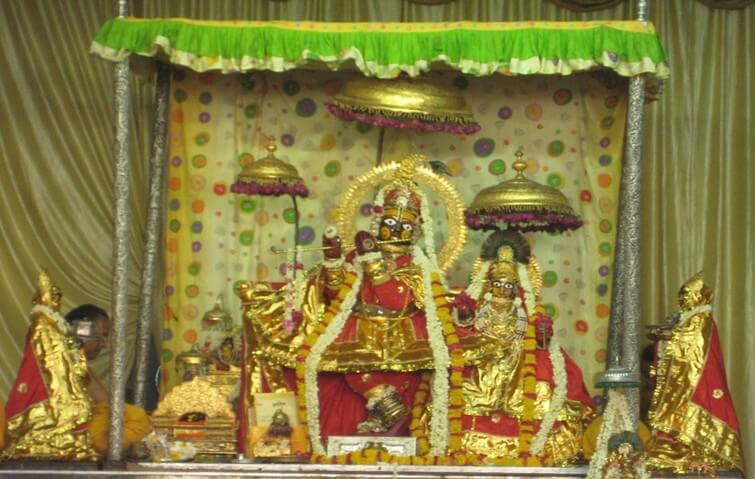
Photo: https://goo.gl/5Dk9Kk
Govind Dev Ji Mandir is located city palace of Jaipur. The main idol of the temple was brought by Raja Sawai Jai Singh II, the founder of Jaipur, and the structure was built by Akbar, thus here one can expect a grand architecture with decorated panels and columns. Legend has it that the Lord Krishna’s image in the temple looks like Krishna’s form during his incarnation on earth. The main idol was formed by Bajranabh, the great grandson of Lord Krishna.
Temple Timings: 04:30 AM to 12:15 AM & 05:30 PM to 09:15 PM
Temple Location: Jalebi Chowk, Badi Chopade, Badi Choupad, J.D.A. Market, Pink City, Jaipur, Rajasthan 302002
11. ISKCON, Vrindavan, Uttar Pradesh

Photo: https://goo.gl/QR12j5
Vrindavan ISKCON (International Society for Krishna Consciousness), also known as Mathura Krishna Balaram Mandir is magnificent. The temple was built in 1975. To reach the main sanctum of the temple, you will have to make your way through the intricately carved walls and domes. At the end of the walkway, you will see a beautiful marble courtyard that has a tamal tree around the main sanctum. There are three altars in the main hall of the temple. In the central altar, a beautiful idol of Krishna and Balarama is adorned. The right altar has the idol of Radha Krishna with Gopi, Lalita, and Vishakha, and left one is decorated Murti of Chaitanya Mahaprabhu with Nityananda, along with Bhaktivedanta Swami Prabhupada and his spiritual teacher Bhaktisiddhanta Sarasvati Thakura. Since the temple was the final resting ground of A. C. Bhaktivedanta Swami Prabhupada, thus here you can see his samadhi. The house of Swami Prabhupada in the temple is now a museum.
Pilgrims singing..
“Hare Krishna, Hare Krishna, Krishna Krishna, Hare Hare; Hare Rama, Hare Rama, Rama Rama Hare Hare” with an accompaniment of cymbals, tambourines, sticks, drums, bells and a harmonium is a common sight in the temple. Don’t miss the aarti and kirtan.
Temple Timings: 04:30 AM to 08:45 PM, Closed in the afternoon
Temple Location: Krishna Balaram Temple, Bhaktivedanta Swami Marg, Raman Reti, Vrindavan, Uttar Pradesh-281121
12. ISKCON, Bangalore

Counted amongst the largest ISKCON temples in India, Sri Radha Krishna Temple aka ISKCON Temple Bangalore was built in 1997 to promote Vedic culture and spiritual learning. Positioned on the top of the Vaikuntha Hill, the temple propagates Krishna Consciousness all over the world. The gold-plated dhwaja-stambha (flag post) and kalash shikara are some main features of the temple. In the main hall of the temple, there are six sanctums-
- Radha-Krishna
- Krishna Balrama
- Nitai Gauranga (Chaitanya Mahaprabhu and Nityananda)
- Srinivasa Govinda (also known as Venkateswara)
- Prahlada Narasimha
- Srila Prabhupada
While taking an exit from the temple, make a point to visit the market from where you can purchase some bags, pencils, compact discs, rings, clothes and many other things with the inscription of Lord Krishna. Deepotsava, Govardhana Puja, Sri Vaikuntha Ekadashi, Sri Nityananda Trayodashi, Sri Gaura Purnima, Sri Rama Navami, and Panihati Chida-dahi Utsava are the main festivals of the temple.
Temple Location: Hare Krishna Hill, Chord Road, Rajaji Nagar, Bengaluru, Karnataka 560010
Temple Timings: 04:15 AM to 12:50 PM & 04:15 PM to 08:30 PM
13. Shri Nathji Temple, Nathdwara, Rajasthan
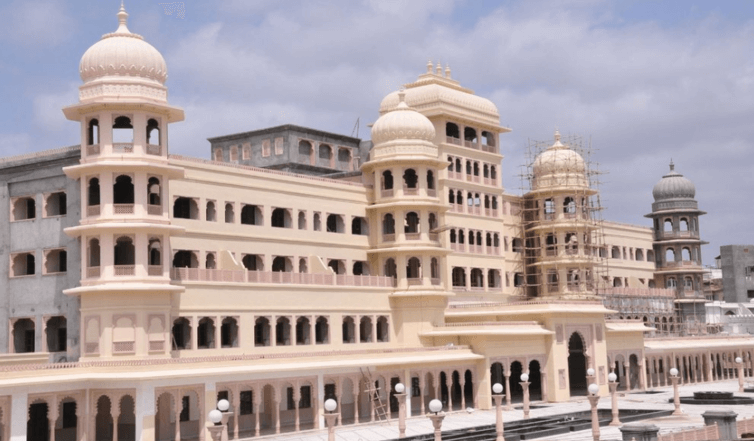
Shrinathji Temple in Nathdwara is mainly known for its main idol, which was brought by the king of Mewar from the Govardhan hill to safeguard it against the Aurangzeb, a Mughal monarch. The principal deity of the temple or Gadadhar, and is depicted as a black representation of Vishnu. Initially, when the idol was brought down from the Govardhan, it was not meant to be installed at the same place where it currently stands. Unintentionally, the chariot carrying the idol jammed here, and consequently, a shrine was established with the permission of the then Rana of Mewar at Nathdwara. People of Vaishnava community come in large numbers to visit this holy pilgrimage, especially during the festivals like Holi, Diwali, and Janmashtmi.
Temple Location: Nathdwara, Rajasthan – 313 301
Temple Timings: 05:30 AM to 12:10 PM & 03:35 PM to 07:20 PM
14. Arulmigu Rajagopalaswamy Temple, Tiruvarur, Tamil Nadu

Photo: https://goo.gl/QTzkGv
Reckoned as the ‘Dakshina Dwarka’ along by the Hindu pilgrims, Rajagopalaswamy temple is a prominent Vaishnavite shrines in North India. Within the temple complex, there are 16 gopurams (tower gateways), 7 prakarams (outer courtyard), 24 shrines, seven mandapams (halls) and nine sacred theerthams (temple tanks), thus making this temple a must visit for the history lovers. Even the interiors of the temple are equally magnificent. Image of the presiding deity, also known as Rajamannar, is 156 Feet tall.
Apart from the main hall, there are nine waterbodies in the temple. Haridra Nadhi, one of the water tank outside the temple, is considered one of the largest temple tanks in India. The temple attracts a huge crowd during the three yearly festivals, primarily on the chariot festival, which is celebrated during the Tamil month of Panguni (June-July).
Temple Location: Mannargudi, Tiruvarur, Tamil Nadu 614001
Temple Timings: 6:30 AM to 12.00 Noon and 4.30 PM to 9.00 PM
15. Shri Keshavraiji Temple, Bet Dwarka

Photo: https://goo.gl/vmKv8G
Situated in the Bet Dwarka, the actual abode of Lord Shri Krishna, Shri Keshavraiji Temple is a highly revered Hindu temple. It is believed that when Sudama, the childhood friend of Krishna came to visit him in his Bet Dwarka Palace, he presented him rice only. Pushkarna Brahmin along with Bhatia devotees, mostly from Sindh, Rajasthan, Kutch, Gujarat and Punjab, visit Keshavraiji most often. To reach Beyt Dwarka, you will have to take a boat from Dwarka.
Temple Location: Bet Dwarka, Gujarat 361345
16. Shamlaji Temple, Samalaji, Gujarat

Photo: https://goo.gl/Md8Q40
Stationed at the bank of Meshow River, Shamlaji Temple is sacred to Sakshi Gopal or Gadadhar. The temple is considered as the most significant among the few shrines dedicated to a younger form of Krishna. In the main sanctum of the temple, which is covered by beautiful domed ceilings and traditional spire, you can see the idol of Lord Shri Krishna, depicted as a black incarnation of Lord Vishnu and worshiped as a cowherd. Vasudev, Gadadhar, and Krishna, incarnations of Krishna, are worshiped in the temple. Cow is one of the most worshiped animals in the temple, she treated as the gods in the shape of an animal. The temple has impressive exteriors as well. Entirely made of white marble, the temple is 320 ft high and looks breathtakingly beautiful for its impressive designs that describe the different mythological stories.
Temple Location: NH8, Samalaji, Gujarat 383355
17. Ambalappuzha Sri Krishna Temple, Ambalapuzha, Kerala
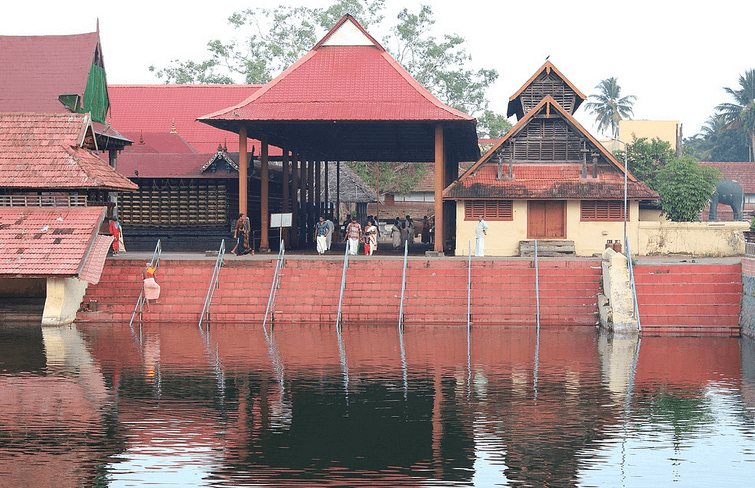
Photo: https://goo.gl/be4K7o
Built somewhere in 16-17th century by the local ruler, Ambalapuzha Temple is known for its idol, which belongs to Guruvayoor Temple, and was brought down during the raid of Tipu Sultan in 1789. The presiding deity of the temple is Unni Krishna (the child form of Lord Krishna). Don’t forget to try the scrumptious palpayasam (sweet porridge made of milk), which by the way has a unique story associated with it. Amabalapuzha Temple Festival (July), and Aaraattu festival (March-April) are the main festivals of the temple. In every 12 years, Pallipana (devotional temple art form) is performed by Velans (sorcerers) in the temple. In fact, Ottanthullal, a satiric art form created by the poet Kunchan Nambiar, was first performed on the premises of this temple. Also, the temple is known for its traditional Kerala architecture too.
Temple Timings: 3:00 AM to 12 Noon and 5:00 PM to 8:00 PM
Temple Location: SH 12, Ambalapuzha, Kerala 688561
18. Jagannath Temple, Ahmedabad, Gujarat
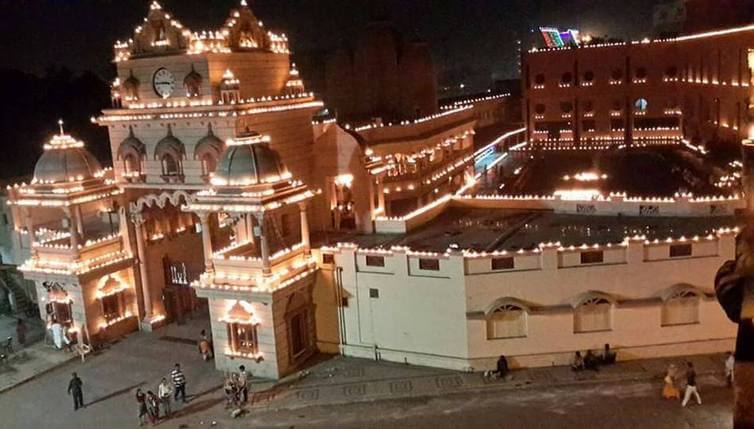
Photo: https://goo.gl/B0l1mn
A prominent religious tourism place in Gujarat, Jagannath Temple is primarily known for the idol of Lord Jagannath along with his brother, Lord Baldev and his sister, Goddess Subhadra. Back in 1969, the temple as attacked by some Muslim youth. Later, during the period – 1996-2000, however, it was renovated and the idols of Jagannatha and his siblings were installed on a raised platform or Ratna Bedi. Also, there is a Hanuman Temple within the vicinity of the temple complex. Similar to the rath yatra organized in Puri, this temple has its cart festival. As per tradition elephants have the first glimpse of Jagannath, his brother Balabhadra and sister Subhadra and lead the procession. The entire entourage sets off from the temple in the morning journeys through the city and returns by evening.
Temple Timings: 04:30 AM to 01:00 PM & 03:00 PM to 09:00 PM
Temple Location: A.P.M.C. Market, Jamalpur Char Rasta, Jamalpur Rd, Ahmedabad, Gujarat 380022
19. Balkrishna temple, Hampi, Karnataka
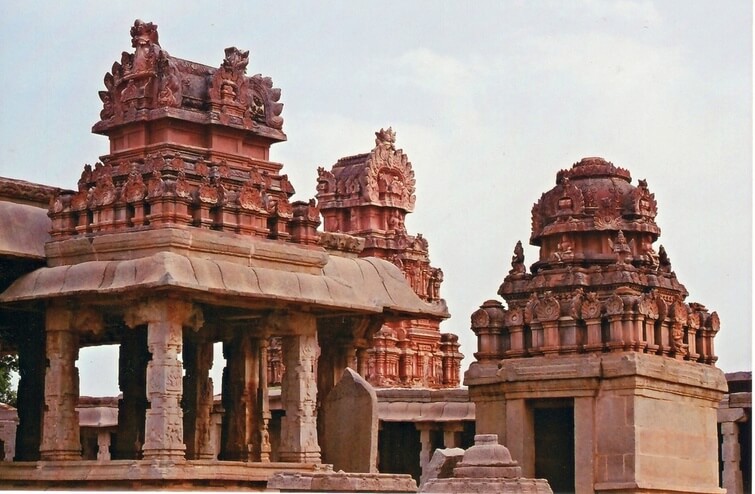
Photo: https://goo.gl/hwnQlx
Krishna Temple in Hampi might be difficult to approach but its unique architecture is worth all effort. And it is even enlisted in the UNESCO world heritage site. Presiding deity of the temple is Lord Balakrishna (the infant form of Lord Krishna). In 1513 AD the temple was erected by ruler Krishnadevaraya of the Vijayanagara to commemorate his victory in the eastern reign of Udayagiri. Though the Idol of the presiding deity of the temple, Lord Balakrishna, is displayed in the State Museum at Chennai but it is quite renowned in Hampi and deserved to be on the list. A distinctive feature of the temple is its tower walls.
20. Venugopala Swamy Temple, Mysore, Karnataka
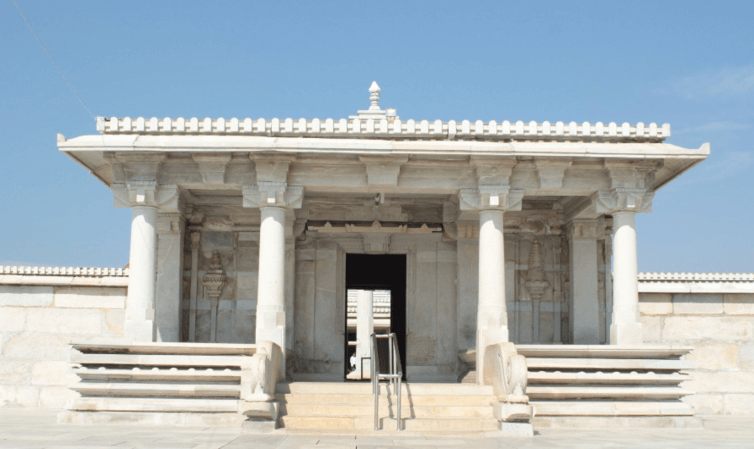
After coming more than half way through the list, I have realized that Krishna temples not only has unique history but extravagant architecture too. The next entry on our list, Venugopala Swamy Temple, perfectly supports the statement. An epitome of Hoysala architecture in Karnataka, it was built in the 12th century AD. As per the locals, earlier the temple was located in the village of Kannambadi. Years later, an order was passed to make a KRS Dam, but the problem was that its construction could submerge all the nearby settlement and even the temples. That’s when Krishna Raja Wadiyar IV ordered the construction of a new village for the residents of Kannambadi and aptly named it Hosa Kannambadi (New Kannambadi). In the year 1930, the presiding deity, Shri Venugopalaswamy, Lord Krishna playing his flute as a cowherd, once again resides in the temple’s sanctum. Even today, when water levels of the KRS are at their maximum capacity (124.80 feet), the backwaters just touch the outer walls of the temple at its new site, about 9 km. from the famous Brindavan Gardens.
21. Arulmigu Sri Parthasarathyswamy Temple, Triplicane, Chennai
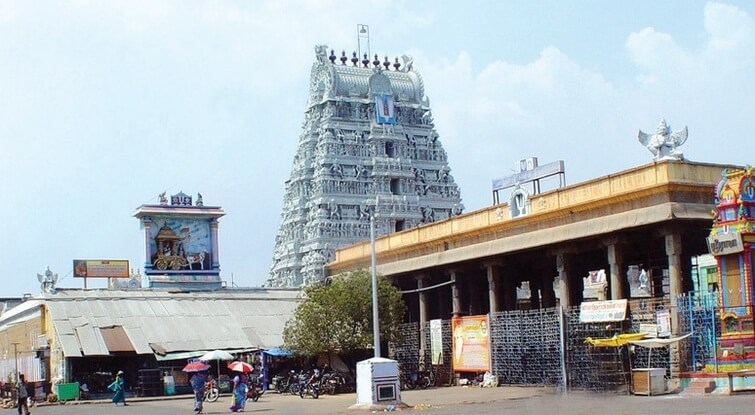
The Parthasarathy Swamy temple in Tiruvallikeni is the only Divya Desam among the 108 strictly within Chennai city limits, which means the abode of Vishnu. The temple might be sacred to Lord Vishnu but here Lord Krishna is worshiped as ‘Parthasarathy,’ referring to his role as a charioteer to Arjuna in the epic Mahabharatha. Even the trace of this ancient temple can see in Divya Prabandha, the early medieval Tamil literature canon. The temple originally built in 8th century by the Chola dynasty; further, it was expanded by Cholas and later by the Vijayanagara kings in the 15th century. Standing, seated and reclining poses of Vishnu are the major highlights of the temple.
Temple Timings: 05:50 AM to 12:30 PM and 04:00 PM to 09:00 PM
Temple Location: Singarachari Street, Triplicane, Chennai, Tamil Nadu 600005
22. Aranmula Parthasarathy Temple, Mallapuzhassery, Kerala
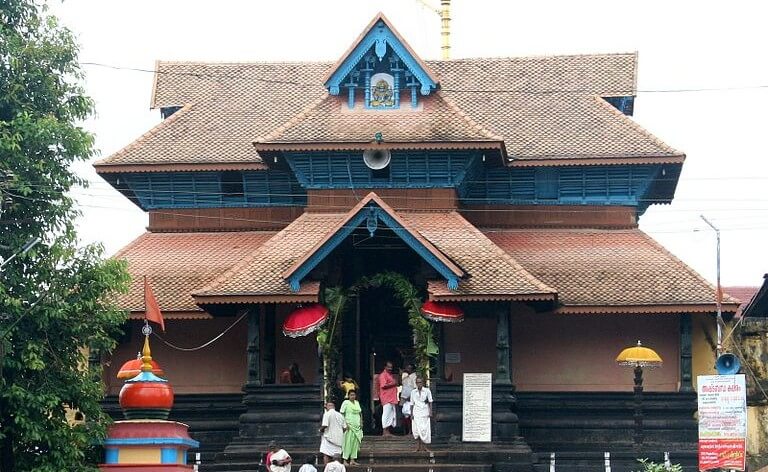
Counted amongst the Divya Desam, 108 Vishnu temples that are mentioned in the works of the Tamil Azhvars, Aranmula Parthasarathy Temple is sacred to Parthasarathy, which is another name of Krishna on account of his character as the charioteer of Arjun in Mahabharat. The temple is mainly known for the fact that it is one of the major stopover points of the procession that carries sacred jewels called Thiruvabharanam to Sabarimala. Also, the Thanka Anki, the golden attire of Ayyappa, which were donated by King of Travancore, is safeguarded in this temple. The main sanctum of the temple, locally called Sreekovil, is the place where the main image of the presiding deity resides, which can be only approached Thantri (main priest), and Melshanthi (second priest).
Temple Timings: 04:00 AM to 11:00 PM & 05:00 PM to 08:00 PM
Temple Location: Mavelikkara – Chengannur – Kozhenchery Rd, Mallapuzhassery, Kerala 689533
23. Trichambaram Temple, Thaliparamba, Tamil Nadu
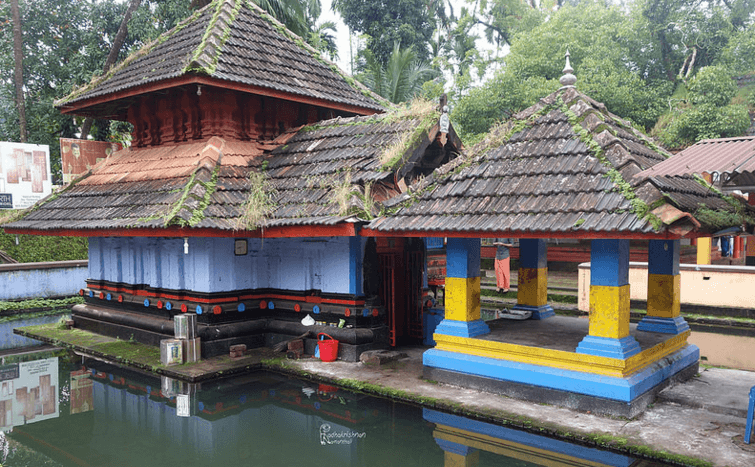
Photo: https://goo.gl/GQ43Vz
Trichambaram Temple is situated in the Kannur district of Kerala, South India. As per the locals, the temple got its name from Thiru Shambara, a maharishi, who have meditated here. An idol of Lord Krishna depicting Raudra (ferocious posture) after Kamsavadham – killing of the demon king Kamsan adorns the holy place of the temple. Trichambaram Temple is known for Kumbham festival, which is held in the month of March. Architecture of the temple is renowned too.
Temple Timings: 05:00 AM to 12 Noon & 05:00 PM to 08:00 PM
Temple Location: Kannur, Thaliparamba, Tamil Nadu 670141
24. Kesava Deo Temple/Krishna Janmabhoomi Temple, Mathura, Uttar Pradesh

Photo: https://goo.gl/3qO9e8
You can figure out the significance of the temple from the fact that it is built at the same place, which was once the prison where Lord Krishna was born. According to the locals, the initial structure of the Kesava Deo Temple was commissioned by Raja Vir Sinh Bundela, who was said to be the great grandson of Krishna. Time and again, the temple has stood the test of time; it was destroyed and rebuilt many times. In the main sanctum of the temple, there is a marble statue of Lord Krishna, along with the small idols of Krishna, Radha, and Balarama. At the back of the main sanctum, there is a small room, which represents the prison where Lord Krishna was born. Janmashtami, Chhappan Bhog, Lathamar Holi are the main festivals celebrated in the temple.
Temple Timings: 05:30 AM to 12 Noon & 04:00 PM to 08:00 PM
25. Bhalka Tirtha & Dehotsarg, Somnath, Gujarat

Bhalka Tirtha temple has been erected at the same spot where the arrow pierced Krishna when he retired into the forest for deep meditation. The temple has a beautiful tribhangi idol of Lord Krishna playing his flute. Close to Bhalka Tirth temple is Dehotsarg, the confluence of three holy rivers, Hirana, Kapila and Sarwaswati. At Dehotsarg, Krishna left his mortal body and departed for his heavenly abode. Since this confluence is where Lord Krishna choose to stay, this site is considered as auspicious for the performing the ceremony of last rites.
Temple Location: Bhalka, Somnath, Gujarat 362265
26. Dwarkadheesh Temple, Mathura

Photo: https://goo.gl/Xp6bKQ
Located in the North region of Mathura, Sri Dwarkadheesh Mandir is one of the oldest and largest temples in Mathura. A must visit on a Krishna Temple tour in Mathura, it is mainly known for featuring the black Marble idol named Dwarkanath, and white marble idol of his counterpart deity Sri Radharan. The courtyard of the temple is enclosed by a magnificently carved Rajasthani style entrance. In the central courtyard, rows of richly carved pillars are nicely lined up. Another small temple of Lord Krishna (Vishnu) Shaligram is also built up within the temple courtyard. To see the most happening side of this temple, you should visit here during the Sri Krishna Janmashtami.
Temple Timings: 05:00 AM to 12 Noon & 02:00 PM to 08:00 PM
Temple Location: Chaubiya Para Moholla, Dwarkadhish Ki Bjaria, Vishram Bazar Rd, Mathura, Uttar Pradesh 281001
27. Shree Ranchhodraiji Maharaj Mandir, Dakor, Gujarat
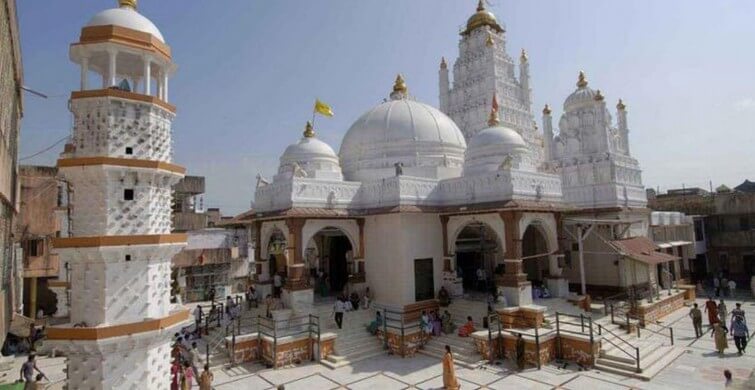
Photo: https://goo.gl/DnO99E
Counted amongst the must visit temples in India, Shree Ranchhodraiji Maharaj Mandir is located on the bank of Lake Gomti, amidst the main bazaar of Dakor. The current structure of the temple was constructed om 1772 by the Maratha noble. It has eight domes and twenty-four turrets covered with gold. In the inner holy place of the temple, the idol of the deity is placed under a canopied pavilion. Next to the main temple is goddess Lakshmi temple. It is believed that Krishna visits Lakshmi at her temple every Friday, and so a courtly procession is held every week to reunite couples.
Temple Timings: 06:45 PM to 12 Noon & 04:15 PM to 07:30 PM
Temple Location: Dist. Kheda, Dakor, Gujarat 388225
28. Birla Mandir, Kurukshetra, Haryana

Photo: https://goo.gl/dd7nrn
A classic example of elegant architecture, Birla Mandir of Kurukshetra is a must see Krishna Temple. It was built in 1950 by the late Jugal Birla. In the premises of the temple, there is a dazzling chariot marble. The chariot is drawn by four horses and Lord Krishna and Arjuna are seen seated there with 18 more characters from the epic places around. Like the other Birla temples in India, this one too is quite renowned for its elegant style of architecture. There so much use of marble; in fact, the scenery in the garden area is made in the pure white marble, which attracts many tourists.
Temple Location: Railway Station Aea, Thanesar, Haryana 136118
29. ISKCON Temple, New Delhi
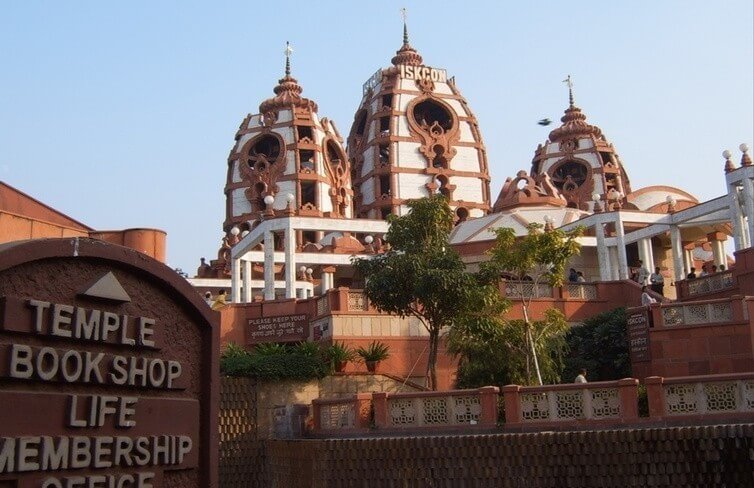
Photo: https://goo.gl/quzLf4
Gem of the gems! ISKCON, Delhi is the counted amongst most spectacular Krishna temple in North India. Located on the Hare Krishna Hill in East of Kailash, the temple is known for its incredible architecture, which has been designed by famous architect Achyut Kanvinde. In the gigantic hall of the temple, you can see the idols of Sri Sri Radha Parthasarathi; Sita Rama Laxman Hanuman, and Sri Sri Gaura Nitai in different atriums. Inside the temple, there is a museum, where you can find Geeta in multiple languages. Food lovers should visit the Govinda’s Restaurant, which serves scrumptious vegetarian food. Do not miss the Mangala Aarti in the evening and the Robot Show that lasts for about an hour or so.
Temple Location: Hare Krishna Hill, Sant Nagar, Main Road, East of Kailash, New Delhi, Delhi 110065
Temple Timings: 04:30 AM to 12:30 PM & 04:15 PM to 09:00 PM
The main temple hall is closed between 1 pm to 4 pm.
30. Shri Gopal Krishna Temple, Mangalore, Karnataka

Photo: https://goo.gl/12WQO9
Spread over an area of 1.5 acres, Shri Gopal Krishna Temple is aesthetically built with the perfection keeping in mind the Vastu principles. To reach the main sanctum of the temple, you will have to cross 108 steps, each symbolizing names of Lord Krishna chanted through Sri Krishna Ashtotthara. Idol of the presiding deity of the temple – Chaturbhuja Mahavishnu – is carved out of black granite by the reputed sculpturer Sri Shyam Sundar Badekkila. Also, there is an idol of Ganpati. Most spectacular part of the temple is the sweeping view of the Mangalore city and beaches that one gets from here.
Temple Location: Classique Village, Shakti Nagar, Mangaluru, Karnataka 575016
Temple Timings: 5:00 AM – 1:00 PM & 4:00 PM – 8:30 PM
From North to South to East to West, Krishna is worshiped everywhere. Though in different forms but he has always been considered as the protector of innocent. Hopefully, the list of these Krishna Temple will be of some help to you. There are many Krishna Temples in India. And if you think, we have forgotten some of them then update us with some that you know of. If you want to plan visit to any of these temple then you can contact the travel experts of Tour My India.
Published: 07 Nov, 2016
From New Delhi, Latika is a travel writer who loves to share her expedition experiences with other travel junkies. She devote her time in exploring beaches and trekking to off beat destinations. Her leisure time would include reading a book at any given beautiful sea or river side. She is one of those who do what they love and love what they do.


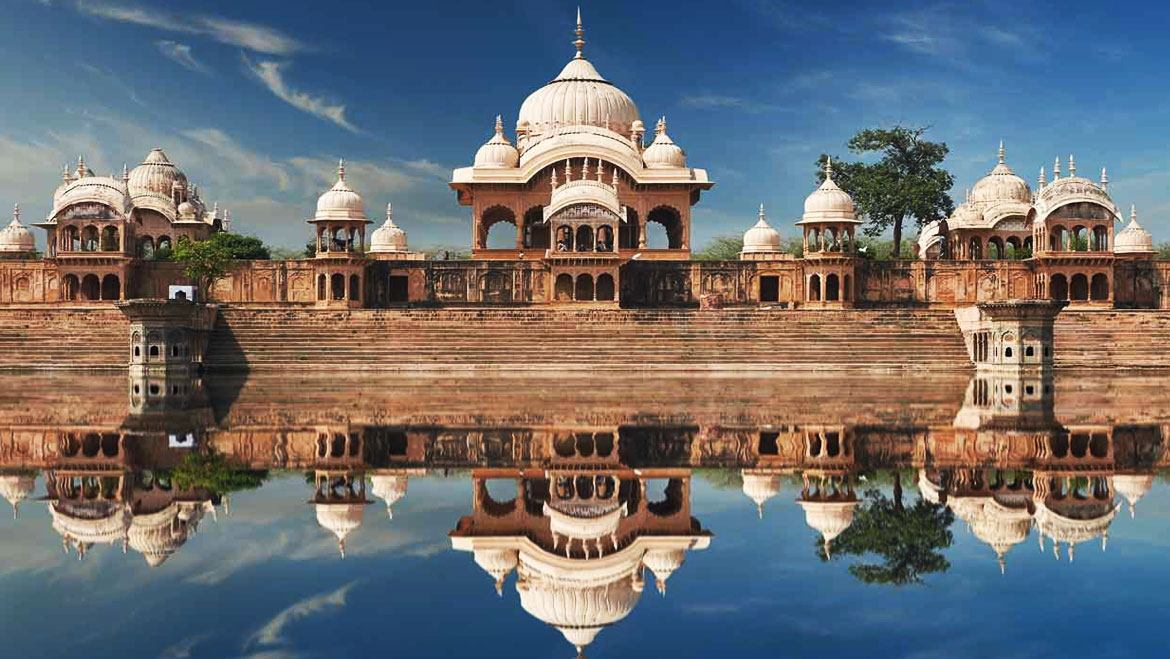
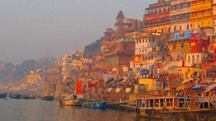 15 Nights / 16 Days
15 Nights / 16 Days  7 Nights / 8 Days
7 Nights / 8 Days  4 Nights / 5 Days
4 Nights / 5 Days 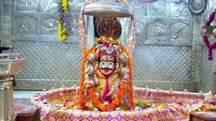 23 Nights / 24 Days
23 Nights / 24 Days 









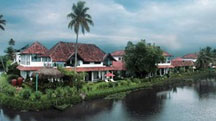 13 Nights / 14 Days
13 Nights / 14 Days  15 Nights / 16 Days
15 Nights / 16 Days 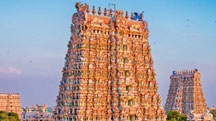 9 Nights / 10 Days
9 Nights / 10 Days  3 Nights / 4 Days
3 Nights / 4 Days 









 5 Nights / 6 Days
5 Nights / 6 Days  5 Nights / 6 Days
5 Nights / 6 Days  4 Nights / 5 Days
4 Nights / 5 Days  5 Nights / 6 Days
5 Nights / 6 Days 









